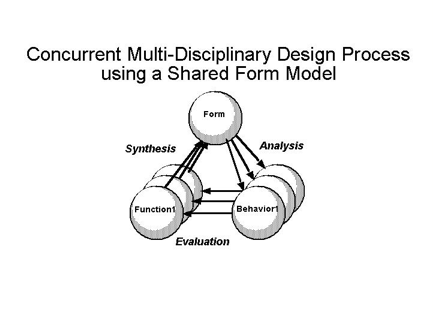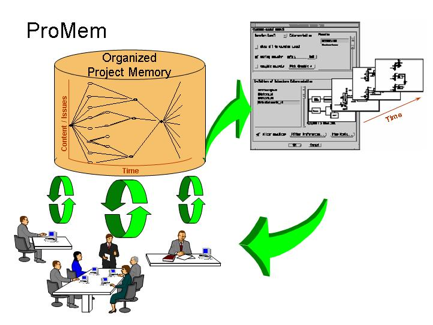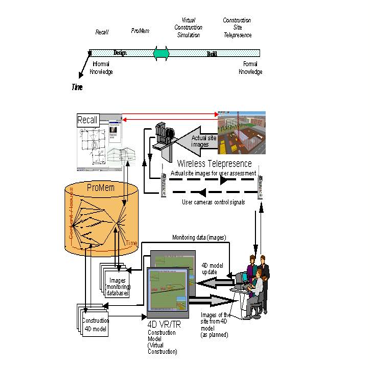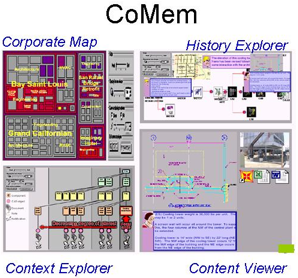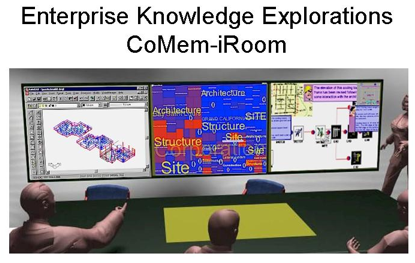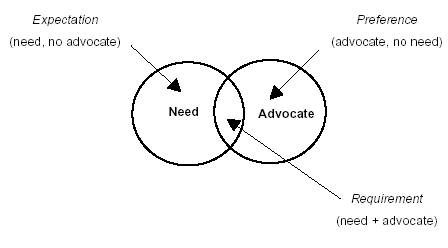Semantic Modeling Extension(SME)
Mark Clayton, Kurt Reiner, and Renate Fruchter
1992-94
SME is a framework that enables designers to map objects from a shared product model to multiple semantic representations and to other shared project knowledge. In SME, a project object encapsulates multiple discipline objects, and a discipline object encapsulates multiple component objects. Each SME object can be linked to graphic objects from the shared 3D product model, or to other shared project documents or data (such as vendor information, analysis models, sketches calculations). The product objects in the shared 3D model allow for cross-referencing among the different disciplines that have registered an interest and have a sementic representation linked to specific objects. The SME model builds on the form-function-behavior paradigm and supports concurrent multi-disciplinary design.
Clayton, J.M., Fruchter, R., Krawinkler, H., and Teicholz, P., "Interpretation Objects for Multi-Disciplinary Design," AI in Design 94, ed. J. Gero, Kluwer Publishing Inc., August 1994, pp573-608.
Interdisciplinary Communication Medium (ICM)
Renate Fruchter, Kurt Reiner, and Mark Clayton
1994-1996
ICM is a computer environment that aims to improve the communication among designers in an interdisciplinary team. It models the formalized Propose-Interpret-Critique-Explain (PICE) paradigm as the communication cycle for collaborative conceptual design. We explored and tested the PICE paradigm by modeling it with a software prototype, ICM , that integrates graphic representations of a shared 3D building model and reasoning applications for simulation, critique, explanation and suggestions for improvement of the building in domains such as such as structural engineering, energy, egress, and constructibility.
Fruchter, R., "Conceptual Collaborative Building Design Through Shared Graphics," special track of IEEE Expert Journal on "Application of Artificial Intelligence in Civil Engineering," Vol. 11, Nr.3, 1996, pp33-41.
Fruchter, R., Clayton, J.M., Krawinkler, H., Kunz, J., and Teicholz, P., "Interdisciplinary Communication Medium for Collaborative Conceptual Building Design," Advances in Engineering Software including Computer Systems in Engineering Journal, Vol 25, Nr. 2/3, 1996, pp89-101.
Project Memory (ProMem)
Kurt Reiner and Renate Fruchter
1995-1999
The ProMem (Project Memory) system takes the semantic modeling engine (SME) as its point of departure and adds to it the time dimension. ProMem captures the evolution of the project at the three levels of granularity identified by the semantic modeling engine (SME) that emulates the structure of project knowledge: project, discipline, and component. ProMem automatically versions each SME object every time a change is made in the design or additional knowledge is created and linked to an object. This versioning is transparent to the designer. The designer is able to go back and flag any version to indicate its level of importance (low, conflict, or milestone) and its level of sharing (private, public, or consensus).
Fruchter, R., Reiner, K., Leifer, L., and Toye, G., "VisionManager: A Computer Environment for Design Evolution Capture," AI in Design 96, ed. J. Gero and F. Sudweeks, Kluwer Publishing Inc., 1996, pp505-524.
Fruchter, R., Reiner, K., Toye, G., and Leifer, L., "Collaborative Mechatronic System Design," Concurrent Engineering: Research and Application Journal, Vol IV, Nr. 4, Dec. 1996, pp401-412.
Knowledge Information Slider System (KISS)
Renate Fruchter, Kurt Reiner, Samuel Yen, and Arkady Retik
1996-1997
Computer-based representation, capture, linking, visualization, navigation, and use of the information and knowledge created in a multi-disciplinary project environment during concept development, design, and construction remains a difficult problem. The Knowledge and Information Slider System (KISS), supports knowledge management and navigation of heterogeneous information that constitutes a building project memory. KISS presents a product-based and context-based approach for project, product, and process evolution capture, organization, and navigation. The prototype formally articulates and links the following four knowledge network levels: people knowledge network, design informal knowledge network, design and construction formal knowledge network, and construction site knowledge network. KISS enables key stakeholders involved in “building a building” to metaphorically slide among the different knowledge networks to retrieve and re-use information in support of their decision process.
Fruchter, R., Reiner, K., Yen, S., and Retik, A., “KISS: Knowledge and Information Slider System,” Proc. of International Conference on Construction Information Technology, June 28-30, 2000, Reykjavik, Iceland.
Knowledge Life-Cycle
Renate Fruchter and Peter Demian
As Professor Paul Romer from the Graduate School of Business at Stanford, once said “knowledge is the only unlimited resource, the one asset that grows with use.” We view knowledge reuse as a step in the knowledge life cycle. Knowledge is created as designers collaborate on design projects using data, information, and past experience and knowledge. It is captured, indexed, and stored in an archive as presented in the next sections. At a later time, it is retrieved from the archive and reused. Finally, as knowledge is reused it is refined and becomes more valuable. In this sense, the archive system acts as a knowledge refinery.
R. Fruchter and P. Demian, (2002) “CoMem: Designing an Interaction Experience for Reuse of Rich Contextual Information from a Corporate Memory,” AIEDAM International Special Issue on “Human Computer Interaction in Engineering Context”, guest co-editors Ian Parmee and Ian Smith, AIEDAM 2002, 16, 127-147.
Corporate Memory (CoMem)
Renate Fruchter and Peter Demian
1999-2004
How can a corporation capitalize on its core competence by turning A/E/C knowledge into working knowledge when large digital repositories are available? How do you find the metaphorical needle in a haystack? How do you find a needle in a haystack if you don’t even know you’re looking for a needle, or if you’ve never seen a haystack before? How can a computer system support designers of constructed facilities in reusing building designs and design experiences from previous projects? Those are the kind of questions that emerging information retrieval and information extraction technologies and algorithms start to address. We present an innovative prototype CoMemTM (Corporate Memory) that addresses these issues
R. Fruchter and P. Demian, (2002) “CoMem: Designing an Interaction Experience for Reuse of Rich Contextual Information from a Corporate Memory,” AIEDAM International Special Issue on “Human Computer Interaction in Engineering Context”, guest co-editors Ian Parmee and Ian Smith, AIEDAM 2002, 16, 127-147.
Fruchter, R. and Demian, P. “Corporate Memory,” in “Knowledge Management in Construction,” ed. Anumba, Egbu, and Carrillo, Thomas Telford Ltd, 2005. 170-192.
Demian, P. and Fruchter, R., 2006 “A Methodology for Usability Evaluation of Corporate Memory Design Reuse Systems.” ASCE Journal of Computing in Civil Engineering, Volume 20, Issue 6, pp. 377-389.
Demian, P. and Fruchter, R., (2006) “Finding and Understanding Reusable Designs from Large Hierarchical Repositories,” Information Visualization Journal, Vol 5., No. 1. 28-46.
Demian, P. and Fruchter, R., (2006) “An Ethnographic Study of Design Knowledge Reuse in the Architecture, Engineering, and Construction Industry,” in Research in Engineering Design, Vol. 16. No. 4, 184-195.
Demian, P. and Fruchter R., “Measuring Relevance in Support of Design Reuse from a Corporate Memory Archive,” ASCE Computing in Civil Engineering Journal April 2005, pp119-136.
CoMem-iRoom
Kushagra Saxena, Matt Breidenthal, Peter Demian, and Renate Fruchter
2003-2005
Fruchter, R., Saxena, K., Breidenthal, M., and Demian, P. (2007) “Collaborative Exploration in an Interactive Workspace,” AIEDAM International Journal, Special issue on “Support for Design Teams,” Vol. 21, Nr. 3, 279-293.
Needs-Advocate Relation in the Project Requirement Definition Process
Michael Thomas Eodice and Renate Fruchter1997-1999
Traditional requirements-definition activities begin with the engineer or design team performing a needs-analysis to identify user requirements. Needs-analysis is generally subjective, and varies according to the composition and experience of the design team. Systematic procedures for defining and ranking requirements are necessary to consolidate the foundation on which the design process is predicated, and to enhance its outcome by providing the designer with a consistent, reliable approach to product development. As a first step towards developing such procedures, research was conducted at Stanford University using empirical data from a NASA spaceflight experiment that flew aboard Space Shuttle mission STS-90 (April 1998).
